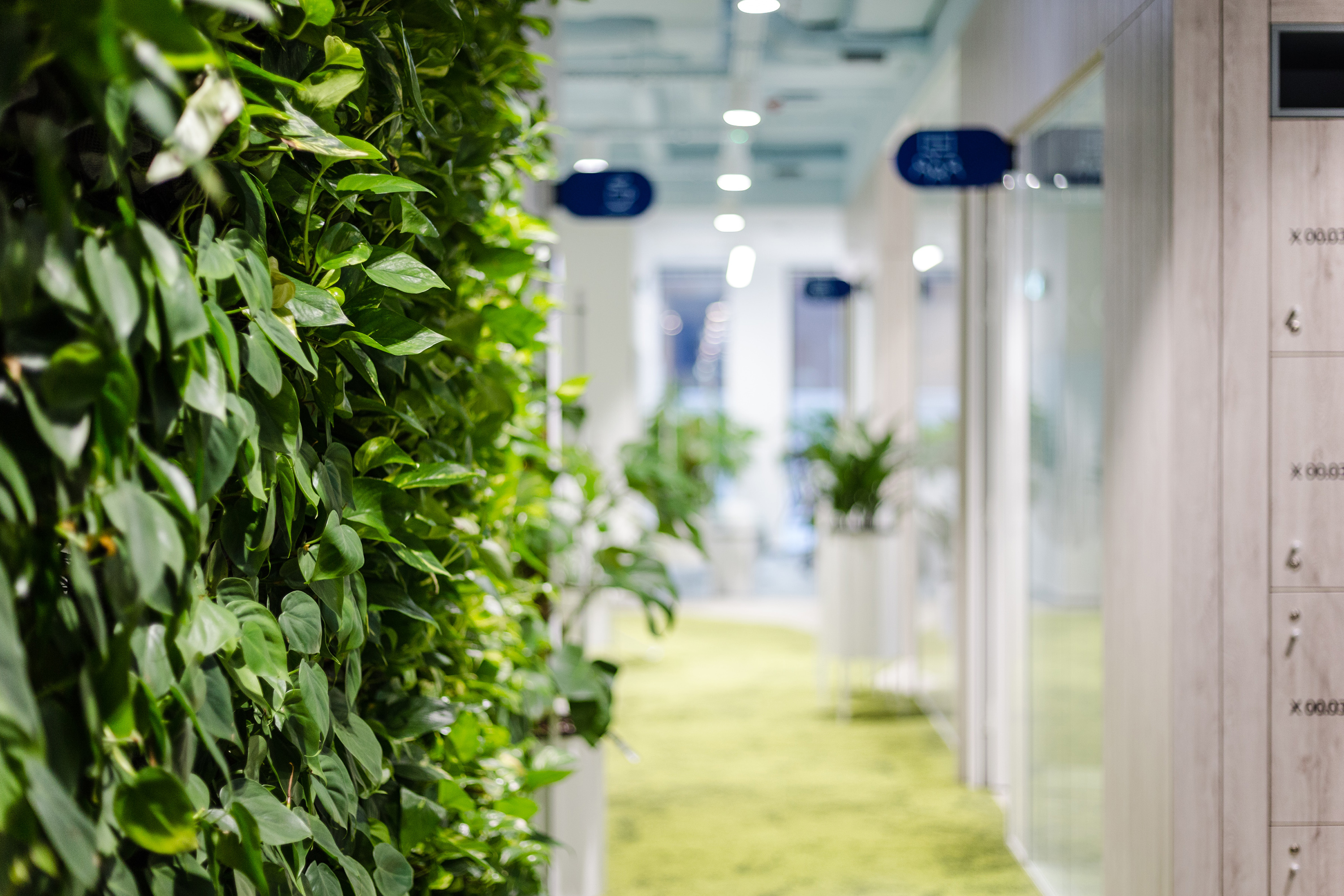
The Greenest Office In The World? | Nordea
Biophilic. Natural working space. This trend is slowly but effectively changing offices. Before Amazon opened the botanical garden inside their office building in Seattle, we created an architectural concept based on greenery for our client’s headquarters in Gdynia. A concept for a real work space, one which is probably the greenest office in the world.

The idea
Nature inspires us, stimulates our senses, and motivates us to act or to calm down. The uniqueness of the natural environment lies in its freedom and harmony, which then influence our mental comfort. Could the environment in which we work be like this?
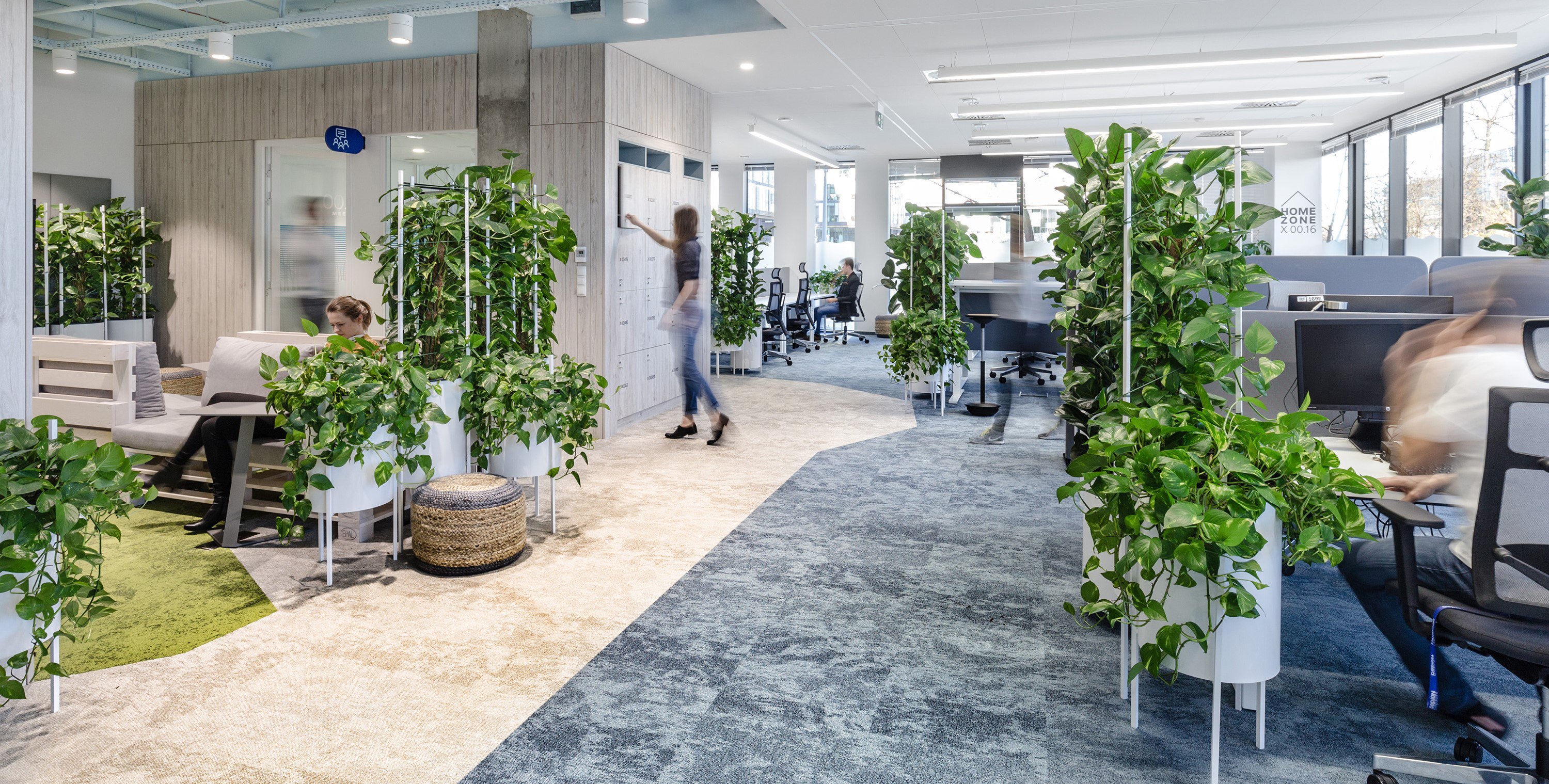
Imagine a workplace that supports productivity, stimulates creativity and takes care of our well-being. The Global Impact of Biophilic Design in the Workplace report, which examines the multifaceted impact of natural and green workspaces on mankind, leads to simple conclusions. Places with plenty of vegetation and natural elements have a positive effect on creativity and work efficiency, reducing stress and maintaining motivation at a high level. We asked ourselves the questions: “Could plants form the dominant part of an office design? How could we make use of natural environmental characteristics, and implement them in a business environment?” The need to design a modern workplace for one of the leaders of IT industry has allowed us to implement the idea of a green office, one that was intended to prove that an appropriate amount of plants and green elements could be crucial for improving the quality of work.
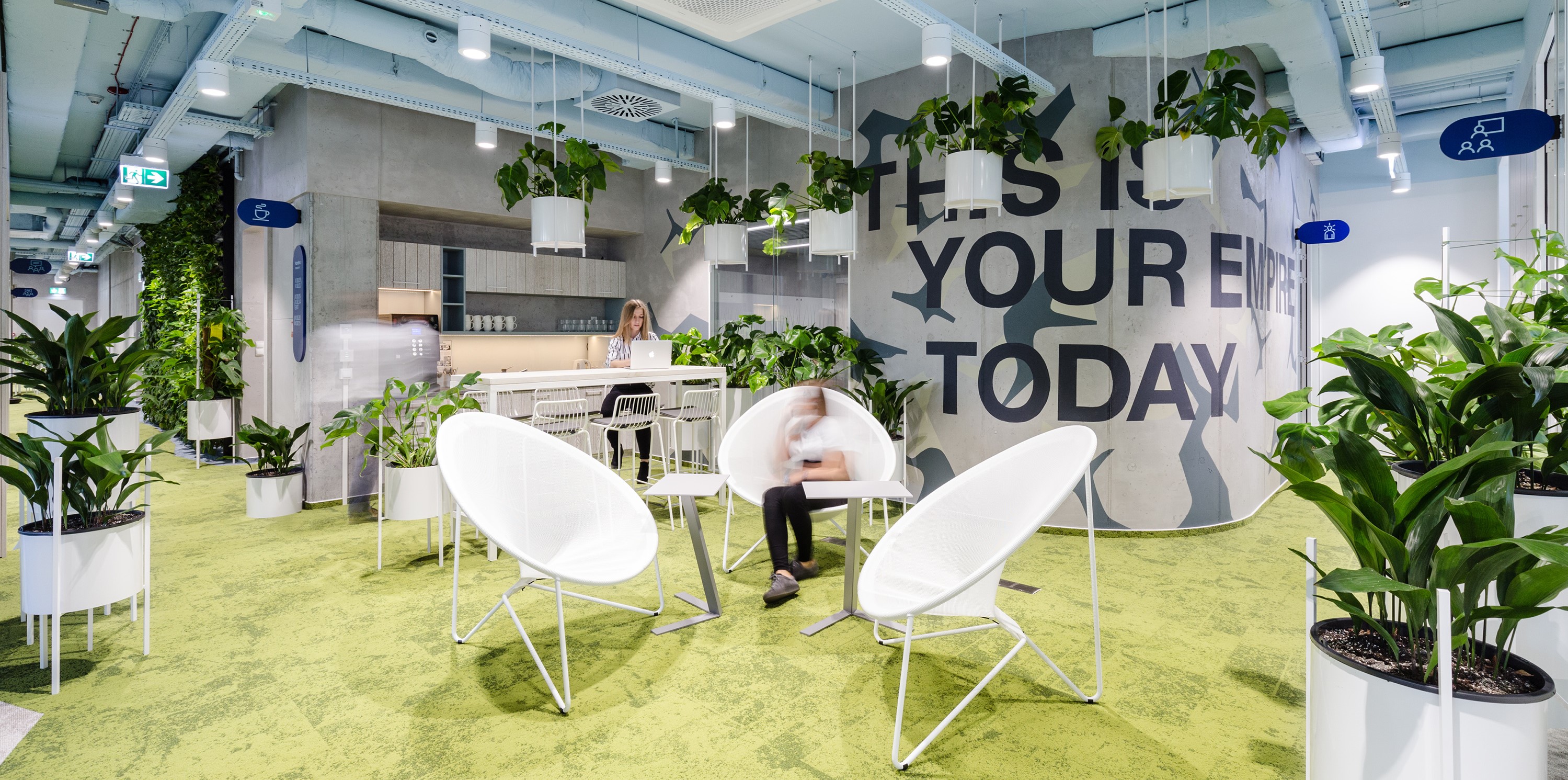
What are the advantages?
We wanted to design an office based on green architecture. At the same time, we realised that the ideological aspirations in this area are in line with the Biophilic design trend. We came up with a number of studies proving that design based on natural elements improves human comfort. The speech by Kamal Meeatle on “How to Grow Fresh Air” was a breakthrough in our thinking about the quality of the internal environment of office buildings. We have been slowly gathering evidence about the impact that microclimatic conditions in the office have on the quality and effectiveness of our work.
Kamal’s most important findings from his research into the green working environment include:
- general air purification of volatile pollutants and dusts, e.g. production adhesives or dust (especially in new offices),
- reduction of headache by up to 24%,
- reduction of eye irritation by up to 52%,
- reduction of energy consumption for room ventilation by 15%,
- specification of three plant species particularly suitable for difficult office environments
The last and most interesting finding was the increase in work productivity by 20%. It is possible to argue with these and other factors, but we decided that the psychological aspect alone, i.e. greater satisfaction from being in a green place, was worth testing.
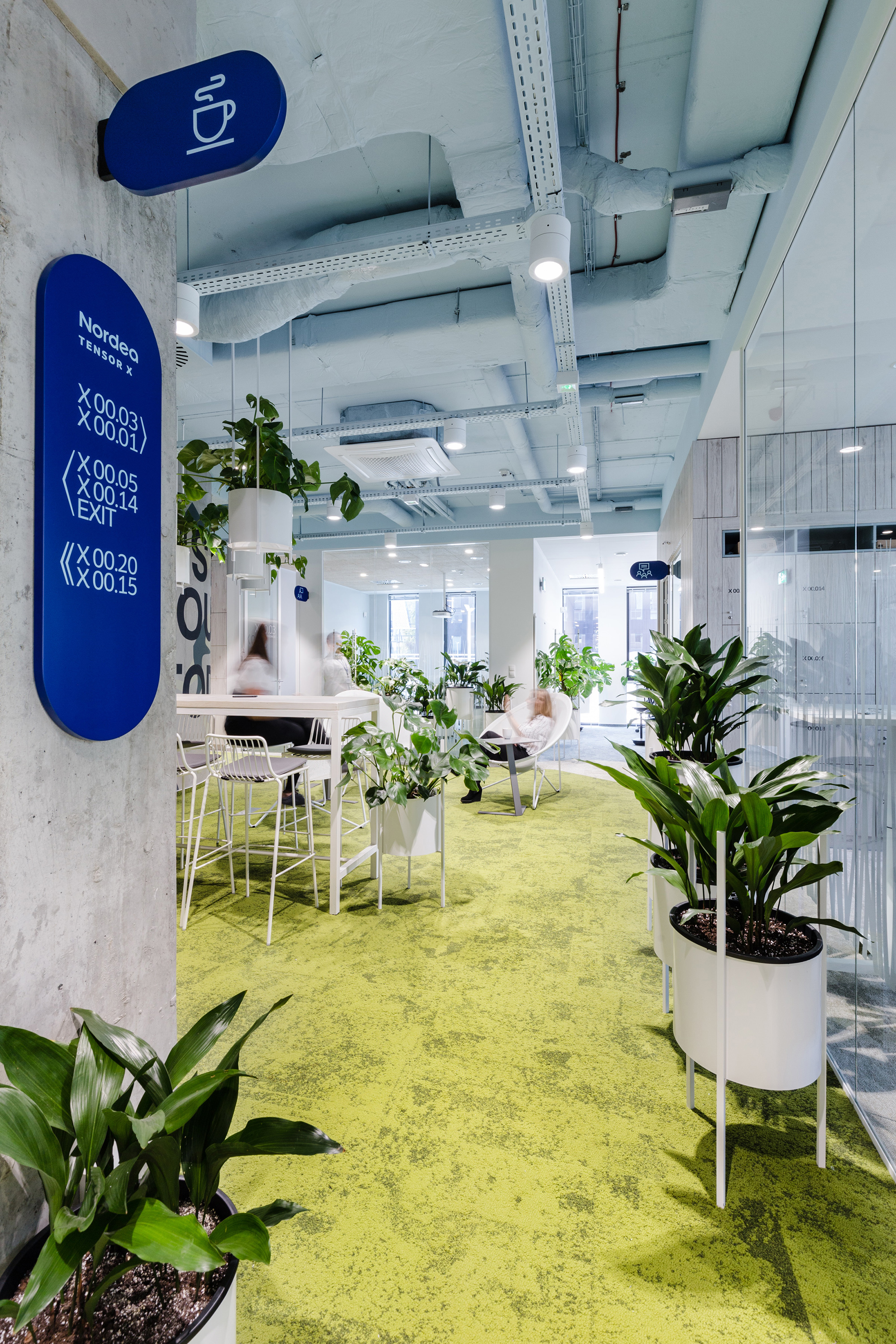
The implementation of a pilot project at the Credit Suisse headquarters in Zurich was an important turning point for us. It featured “Business Garden” areas, full of plants and flexible workstations, intended mainly for focused work. During our visit to the Credit Suisse headquarters in 2016, we learned that these zones have some of the highest utilisation rates among all the spaces.
The Harvard School of Public Health’s report shows that increased indoor air circulation increases cognitive skills by as much as 61%. Furthermore, Harvard University research has shown that “green” offices that reduce air pollution improve our intelligence and cognitive capabilities by 101% compared to standard buildings. A widely discussed report by the American Psychological Society suggests that offices with a large number of plants increase the involvement, productivity and well-being of the employees. The above research confirmed our belief that the presence of plants is particularly important in creating a good working atmosphere, especially as it has a real impact on the results of a given organisation. The green office was intended to be an effective workplace with an excellent indoor climate.
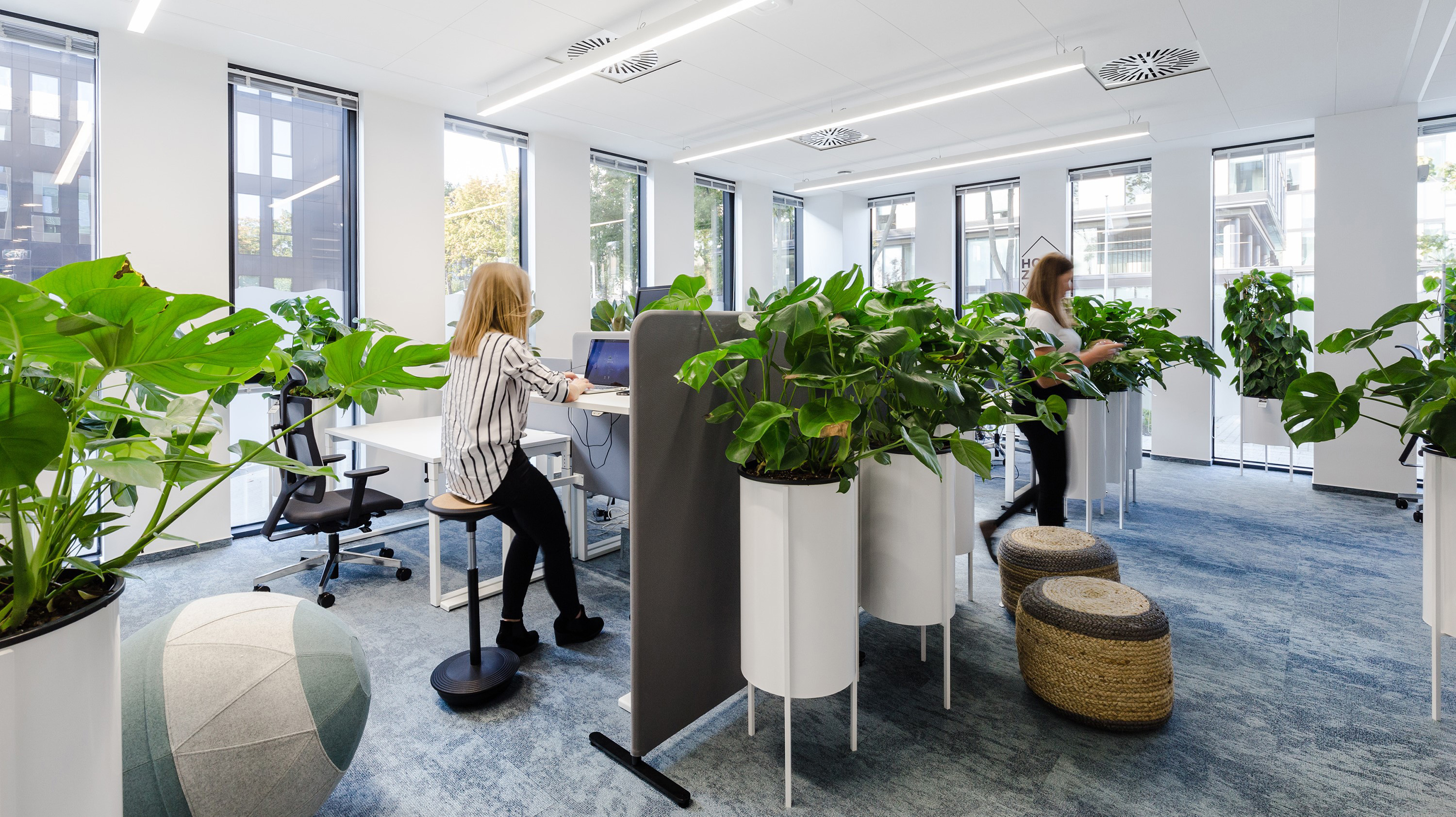
Where did we implement idea?
The idea was growing in our minds for about 2 years. The project for the rapidly growing company headquarters in Gdynia, which we will describe later, proved to be an ideal place to implement this idea. Our goal was to design a place where people were the centre of attention; functional and unique workspaces that would become an image and business tool, and would attract the best candidates. Being aware that as many as a third of the surveyed employees declared that the implementation of a biophilic design in the office of an organization is a factor that plays a significant role in the choice of future employer, we were in no doubt that this was the right direction. So we turned the idea into a project.
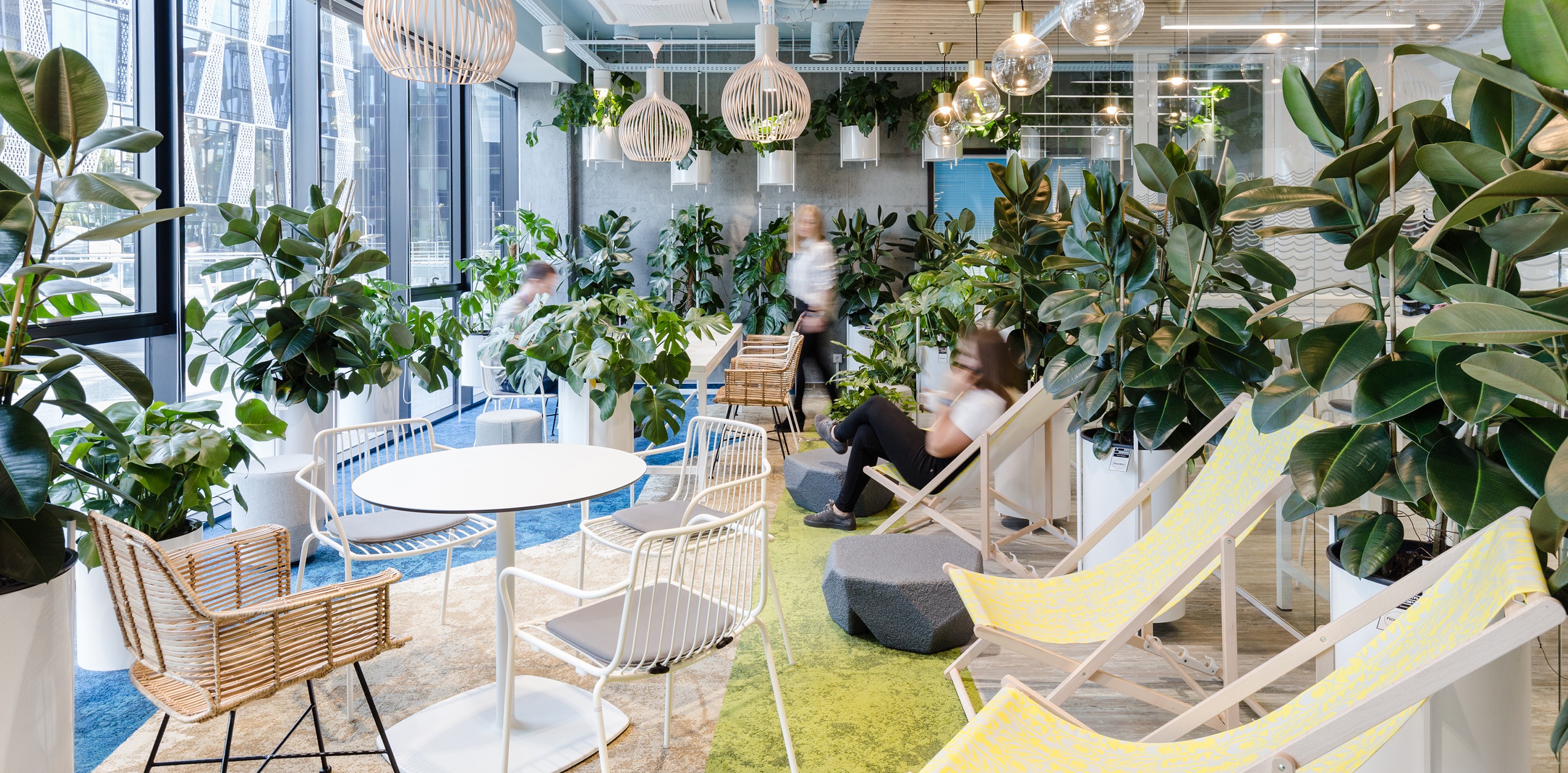
We proposed to create a biophilic office on one of the floors. The success of such a unique approach required a willingness to invest in change and the choice of a human-oriented approach within the organisation. After presenting the concept and assumptions, the client expressed his interest in carrying out such an innovative project. We received two key guidelines: the budget for the floor could not differ from that used for the other floors we designed, and the plants had to be mobile so as to allow the quick re-arrangement of the flexible working environment.
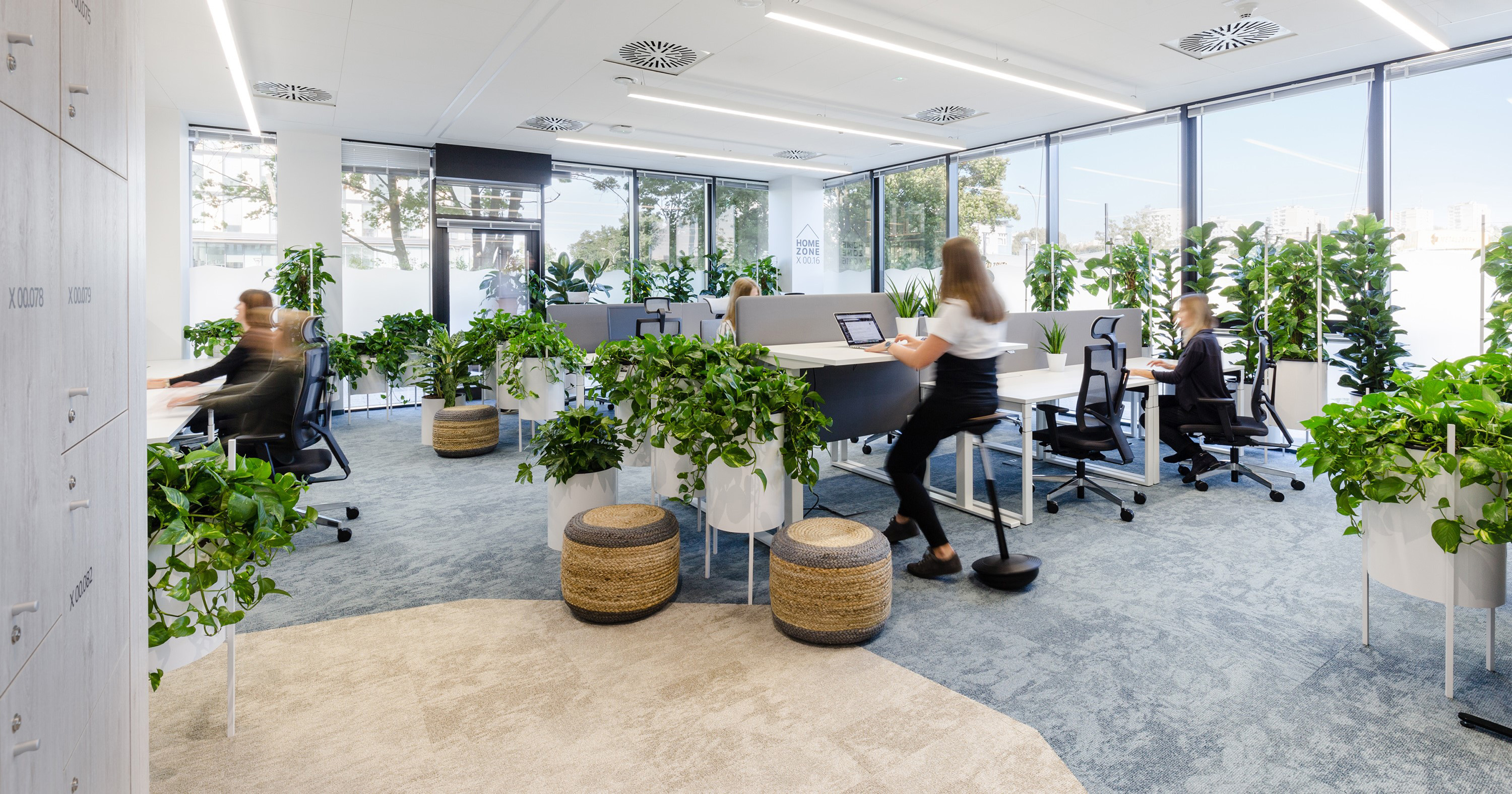
How did we do it?
We arranged about 220 large plants throughout the 770 sqm. of available floor space. The total leaf area of the plants was equivalent to about 4 tennis courts. The optimal amount of greenery, which we based on NASA Clean Air Study, was 15 sqm. per person. The NASA guidelines also aided us in selecting the most effective air purifying and oxygen-supplying plant species. The solutions included easy-to-adjust pots of various sizes, as well as green walls and plants integrated into the furniture.
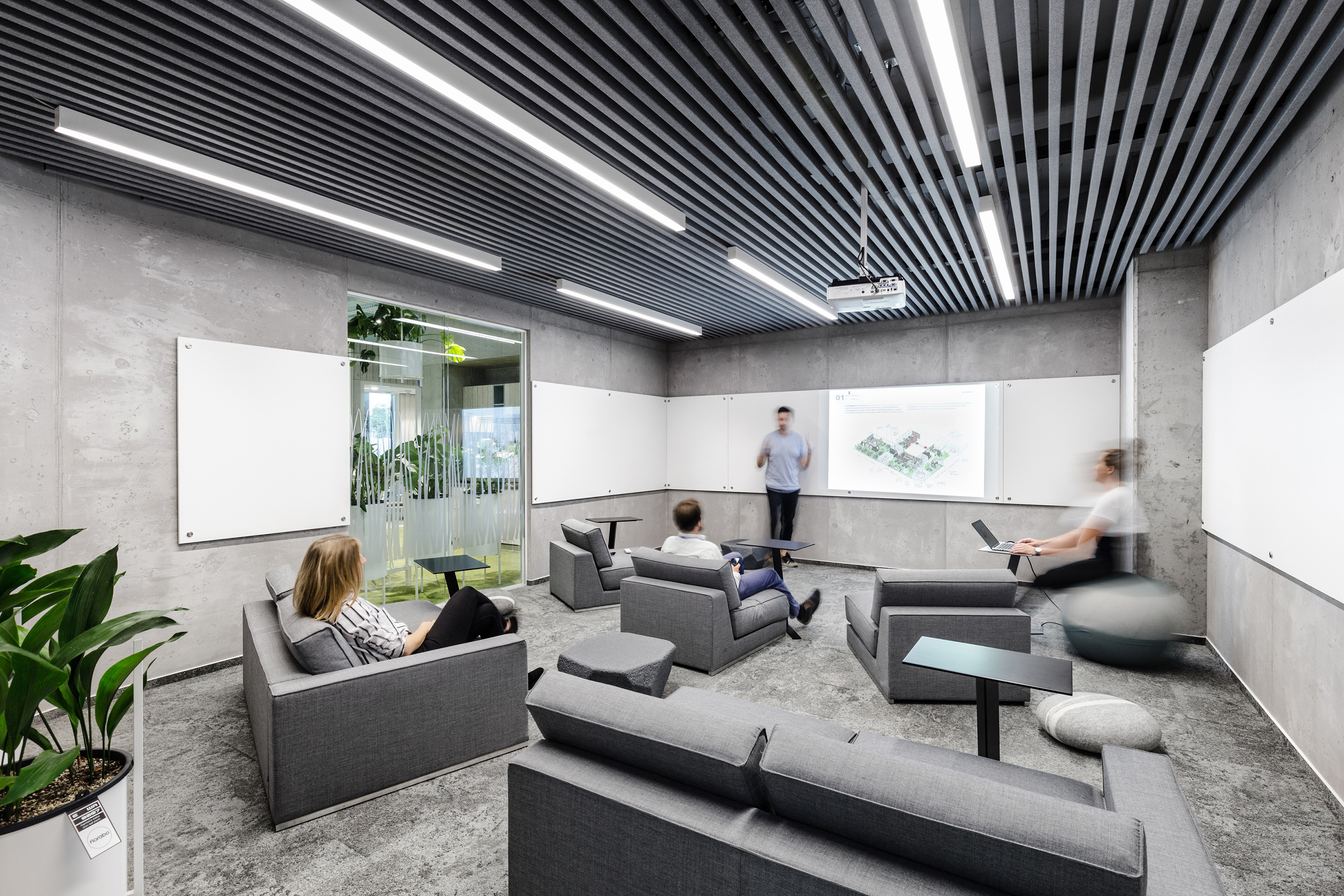
The design was inspired by the “Kępa Redłowska” reserve, thus referred to the Baltic Sea, giving an element of local character to the headquarters. The naturalness of this park, which is located on a cliff, was in harmony with the idea of a green office. This cliff, surrounded as it is by greenery, formed the core of the office design. In other areas of the office, the floor used natural colours to lead through a beach area, and then passed onto the delicate blue of the sea. Brainstorm rooms was inspired by bunkers which vestiges can be found on the reserve area.
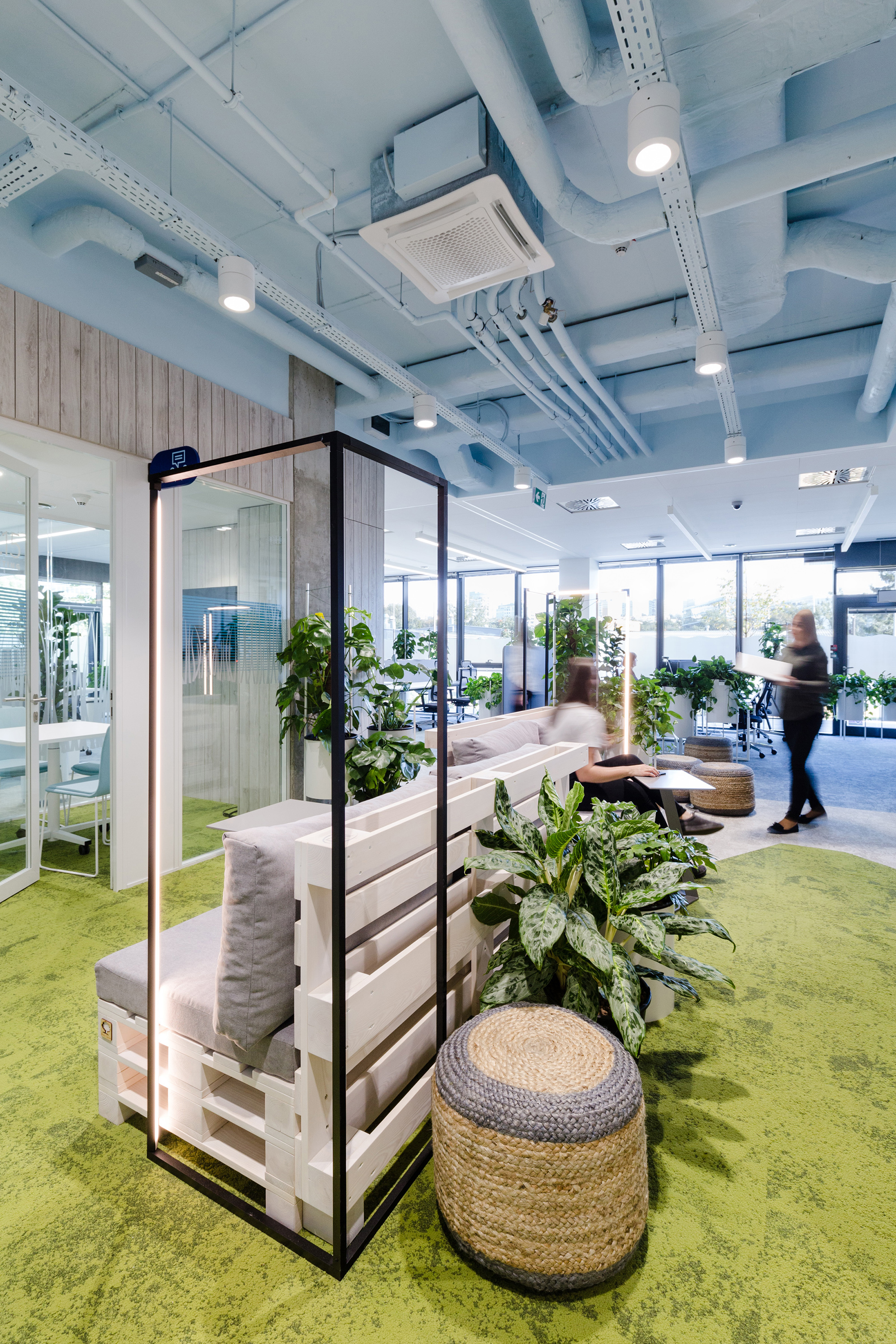

First conclusions and what’s next?
We designed not just the arrangement, but the internal atmosphere of the workplace. Inside the green “Biophilic Office” we were able to make the plants a function. Today we are finally able to define the minimum amount of plants required for a friendly work environment. We also know the mistakes that are made when arranging greenery-based spaces and how to design a plant layout conducive to improving productivity. We continue to expand our knowledge by observing the “natural reserve” in completed office. Scientists from the Warsaw University of Technology have been involved in researching air quality in this internal environment. We analyse the results of the research together, in order to constantly improve the biophilic design concept and share it in the spirit of human-oriented design.
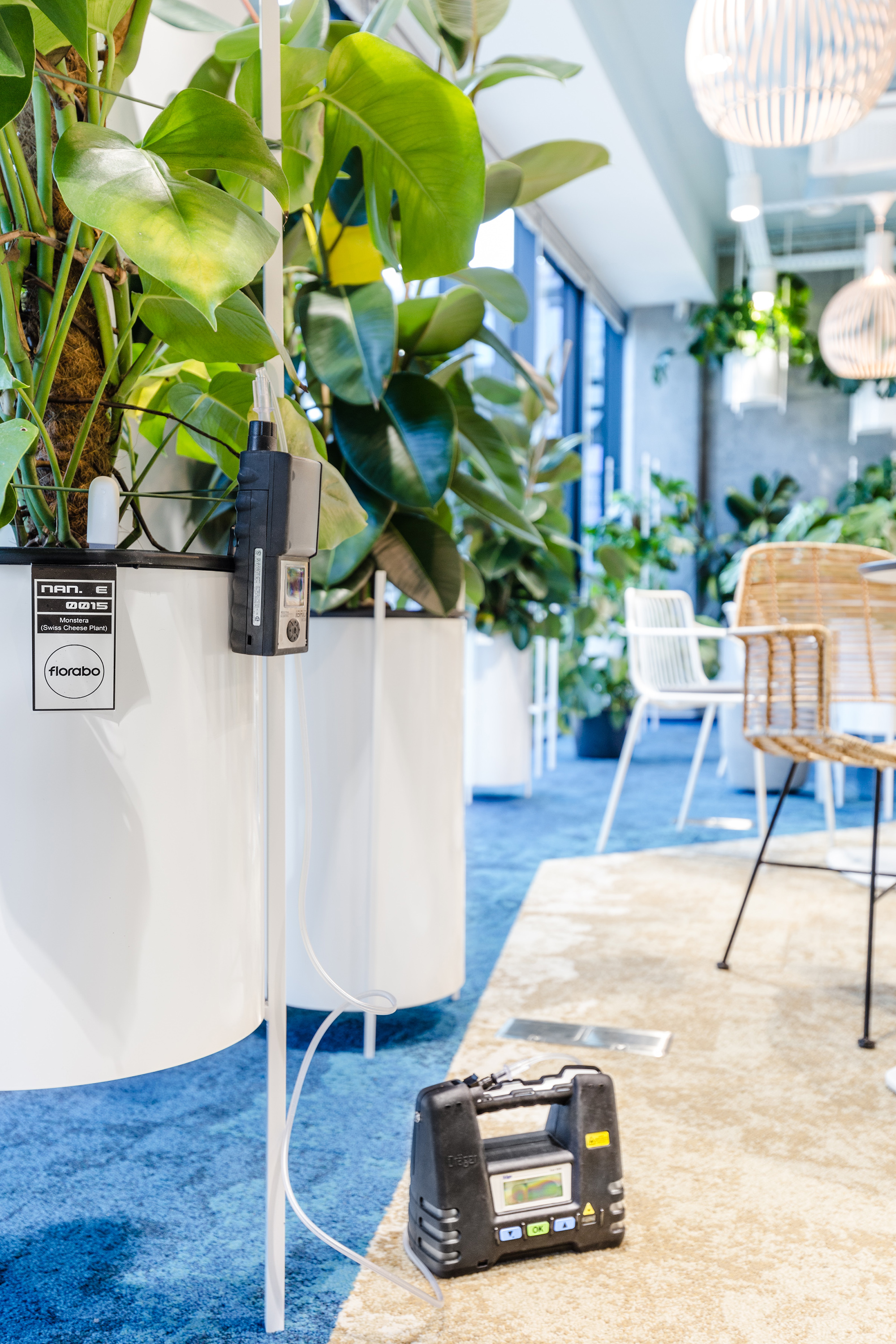
Biophilic Office in Gdynia in numbers:
- Scope of services: brief, strategy, concept design, guidelines to executive design
- Area: 770 sqm
- Number of employees: 70
- Number of floors: 1
- Location: Tensor X, Gdynia
- Project time: 6 months
- Work specification: IT developers
Project team:
Bogusz Parzyszek, CEO | Founder
Dominika Zielińska, Head of Architecture | Managing Partner
Paweł Kołodziej, Project Manager | Senior Architect
Marzena Bednarczyk, Senior Architect
Agata Smolich, Senior Architect
Natalia Leszczyńska, Architect
Katarzyna Gajewska, Research Analyst | Workplace Consulant
Rafał Mikulski, Visualization
Damian Bieniek, Anna Rzeźnik, Kasper Skirgajłło-Krajewski, space branding & wayfinding
Halina Kamińska – Florabo, greenery service, workplace & greenery research
Adam Grzesik – photo
Story: Mateusz Sikora



